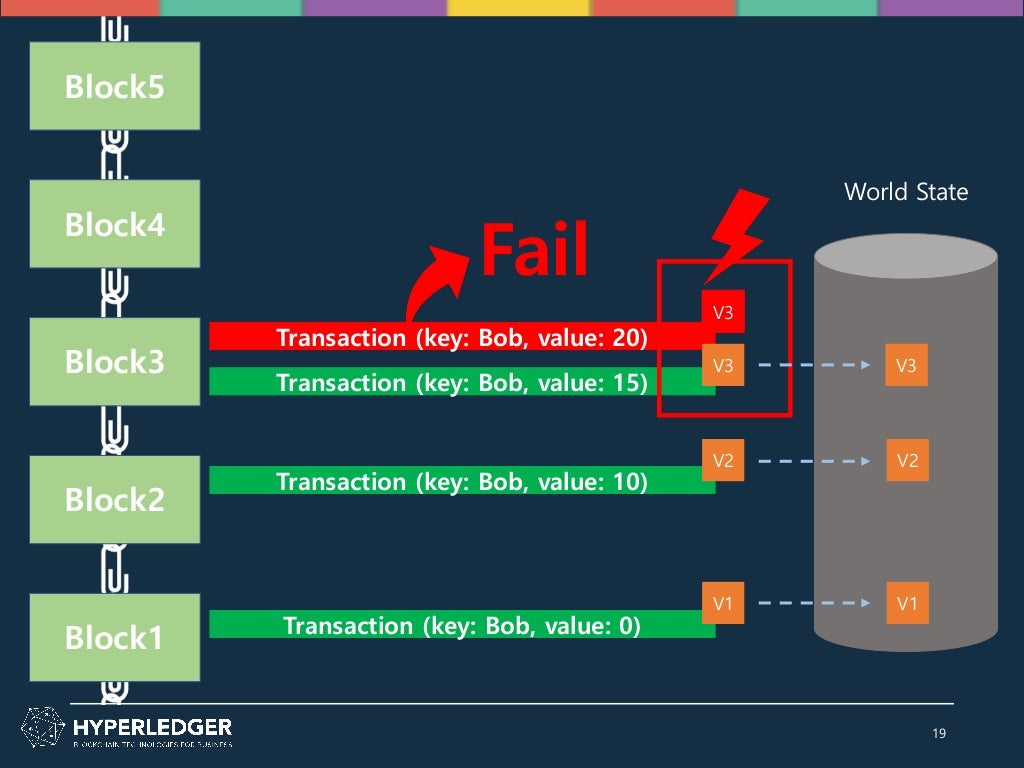# MVCC READ CONFLICT 해결점 고찰

# high-throughput (opens new window) 검토 결과
Delta Transactions => 토근거래에 부적합
Balance Transfer polling the aggregate value regularly - this operation can be performed on a peer dedicated to this function that would not slow down or impact the performance of peers processing customer transactions. breaking up the submission and verification steps of the balance transfer => 거래 로그로만 기록. 부적합.
# How to prevent key collisions in Hyperledger Fabric (opens new window) 분석
No duplicated keys 장점:
- 구현하기 쉬움
- 키 중복이 없음
- Throughput ↑↑↑ 단점:
- MVCC는 해결이 되나 Double Spending 문제 발생 결과: remittance 에 부적합
Put requests in queue 장점:
- 구현하기 쉬움
- 키 중복 없음
- Throughput ↑↑ 단점:
- Application Layer (e.g. TxBooster) 는 Chanincode에 종속됨
- 스케일-아웃 안됨
- Queue 관리하기 힘듬 결과: remittance 에 부적합
Running total 장점:
- 구현하기 쉬움
- Application Layer는 Chaincode에 종속되지 않음
- 스케일 아웃 가능 단점:
- Double Spending 문제 발생
- Objective 값은 응답 늦음
- 금융에서는 부적합 결과: remittance 에 부적합
Batching 장점:
- 키 중복 없음
- Throughput ↑↑↑
- 원장에는 최신값은 저장됨 단점:
- 구현 힘듬
- Chaincode는 Multiple Tx 를 핸들링(Multiple Tx → Single Tx) 하게 개발되어야함
- 멀티 스레드일때 MVCC 발생 (Pre-트랜잭션 응답후 다음 트랜잭션 수행해야함) 결과:
- Samsung SDS Nexledger 구현방식(멀티 스레드방식이므로 MVCC발생, MVCC발생시 Retry)
- 현재 TxBooster(가칭) 구현방식 (멀티 스레드방식이므로 MVCC발생)